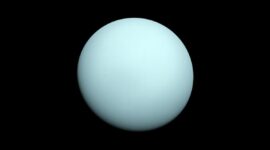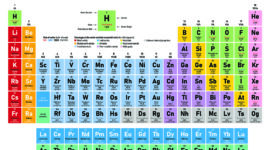July 3rd, 2025, with subsequent reports and analyses extending through July 5th and 6th, 2025, from the vantage point of the International Space Station (ISS), a mesmerizing and scientifically significant atmospheric phenomenon unfolded high above Earth’s tumultuous weather systems. NASA astronaut Nichole Ayers, a member of Expedition 73, captured an extraordinary image of a “sprite,” a transient luminous event (TLE) that momentarily illuminated the upper reaches of our planet’s atmosphere. This spectacular red burst, observed as the ISS traversed over Mexico and the United States, served as a powerful reminder of the hidden electrical fireworks that dance silently above our familiar thunderstorms, far beyond the reach of conventional lightning.
For centuries, anecdotal accounts of strange flashes of light above thunderstorms circulated among pilots and mariners, often dismissed as optical illusions or mere folklore. However, these elusive phenomena, now collectively known as TLEs, began to gain scientific legitimacy with accidental photographic evidence in 1989. Since then, dedicated research and the advent of advanced observational tools, particularly those deployed in space, have steadily peeled back the layers of mystery surrounding these enigmatic events. Sprites, in particular, have emerged as one of the most visually striking and scientifically intriguing forms of TLEs.
A sprite, in essence, is a massive, fleeting electrical discharge that shoots upward from the mesosphere, the atmospheric layer directly above the stratosphere, in response to intense lightning activity in the thunderstorms below. Unlike the familiar, jagged bolts of lightning that travel between clouds or from clouds to the ground, sprites are characterized by a diffuse, glowing red or reddish-orange appearance, often resembling colossal jellyfish, carrots, or columns. They can extend vertically for tens of kilometers, reaching altitudes of up to 100 kilometers (approximately 60 miles) or even higher, far above where traditional thunderstorms typically form, which are usually confined to the troposphere, the lowest layer of the atmosphere.
The mechanism behind sprite formation is intricately linked to powerful cloud-to-ground lightning, specifically positive cloud-to-ground flashes. While positive lightning is less common than its negative counterpart, it tends to be significantly more energetic. When a powerful positive lightning stroke rapidly transfers a large amount of positive charge to the ground, it creates a sudden, strong electrical field in the air above the thunderstorm. This transient electric field then “breaks down” the thin, rarefied air in the mesosphere. Rather than forming a hot plasma channel like conventional lightning, this breakdown creates a “cold plasma” discharge, where excited nitrogen molecules in the upper atmosphere emit light, primarily in the red and orange spectrum, giving sprites their characteristic hue. The process is akin to the glow inside a fluorescent light tube, but on an immense, atmospheric scale.
The fleeting nature of sprites is one of their most defining characteristics. They typically last for only milliseconds – a blink of an eye in human perception – making them incredibly difficult to observe from the ground. Their high altitude also means they are often obscured by the very clouds that trigger them, or by the curvature of the Earth for ground-based observers. This combination of brevity and elevation has contributed to their historical elusiveness and the long skepticism surrounding their existence.
However, the perspective from the International Space Station provides an unparalleled advantage for observing and studying TLEs like sprites. Orbiting approximately 400 kilometers (250 miles) above Earth, the ISS offers an unobstructed, wide-angle view of the planet’s atmosphere, free from the limitations of ground-based weather, light pollution, and the Earth’s curvature. Astronauts like Nichole Ayers, equipped with high-sensitivity cameras, can capture these ephemeral events as they unfold across vast geographical areas. Such space-based observations are not merely visually stunning; they are invaluable to scientific research.
The study of sprites and other TLEs, such as blue jets (upward-traveling cones of blue light from cloud tops) and elves (rapidly expanding, ring-shaped glows caused by electromagnetic pulses from lightning), is crucial for several reasons. Firstly, they offer unique insights into the electrical balance and dynamics of Earth’s upper atmosphere and its coupling with the lower atmosphere. Understanding these processes is vital for developing more accurate atmospheric models and improving weather and climate predictions.
Secondly, TLEs occur in a region of the atmosphere that overlaps with the ionosphere, a layer rich in electrically charged particles that plays a critical role in radio communication and satellite navigation. Disturbances in this region, caused by phenomena like sprites, can potentially impact long-distance radio signals and disrupt communications systems, affecting aviation, maritime operations, and various technologies that rely on stable ionospheric conditions. Research into sprites helps scientists better understand these potential disruptions and develop strategies for mitigation.
Furthermore, some studies suggest that sprites could be injecting significantly more energy into the upper atmosphere than previously believed. This energy transfer, while still under active investigation, could have implications for the chemistry of the upper atmosphere, influencing the distribution of trace gases and even potentially affecting ozone chemistry. By capturing and analyzing data on these events, scientists can refine their understanding of the complex energy budget of the mesosphere and its broader atmospheric implications.
The historical journey of sprite discovery is a testament to the persistent curiosity of scientists and the eventual triumph of observation over skepticism. From the early, unverified reports of pilots in the early 20th century, through the accidental video capture in 1989 that provided the first definitive proof, to the systematic studies from the ISS and dedicated ground-based observatories today, our understanding of sprites has evolved dramatically. Projects like NASA’s “Spritacular” citizen science initiative further underscore the collaborative effort in unraveling these atmospheric mysteries, inviting individuals to contribute their observations and data to the scientific community.
The image captured by Nichole Ayers serves as a powerful reminder that our planet is a dynamic system, filled with astonishing phenomena that are still being explored and understood. High above the storms that shape our daily weather, a silent, colorful dance of electricity unfolds, offering profound insights into the intricate workings of Earth’s atmosphere and its interconnectedness with the near-space environment. As technology advances and our observational capabilities expand, we can anticipate even more breathtaking discoveries from the edge of space, further deepening our appreciation for the wonders of our home planet. The giant sprite, shimmering briefly in the cosmic void, is not just a beautiful sight but a valuable piece of a much larger atmospheric puzzle that scientists are continually striving to solve.



